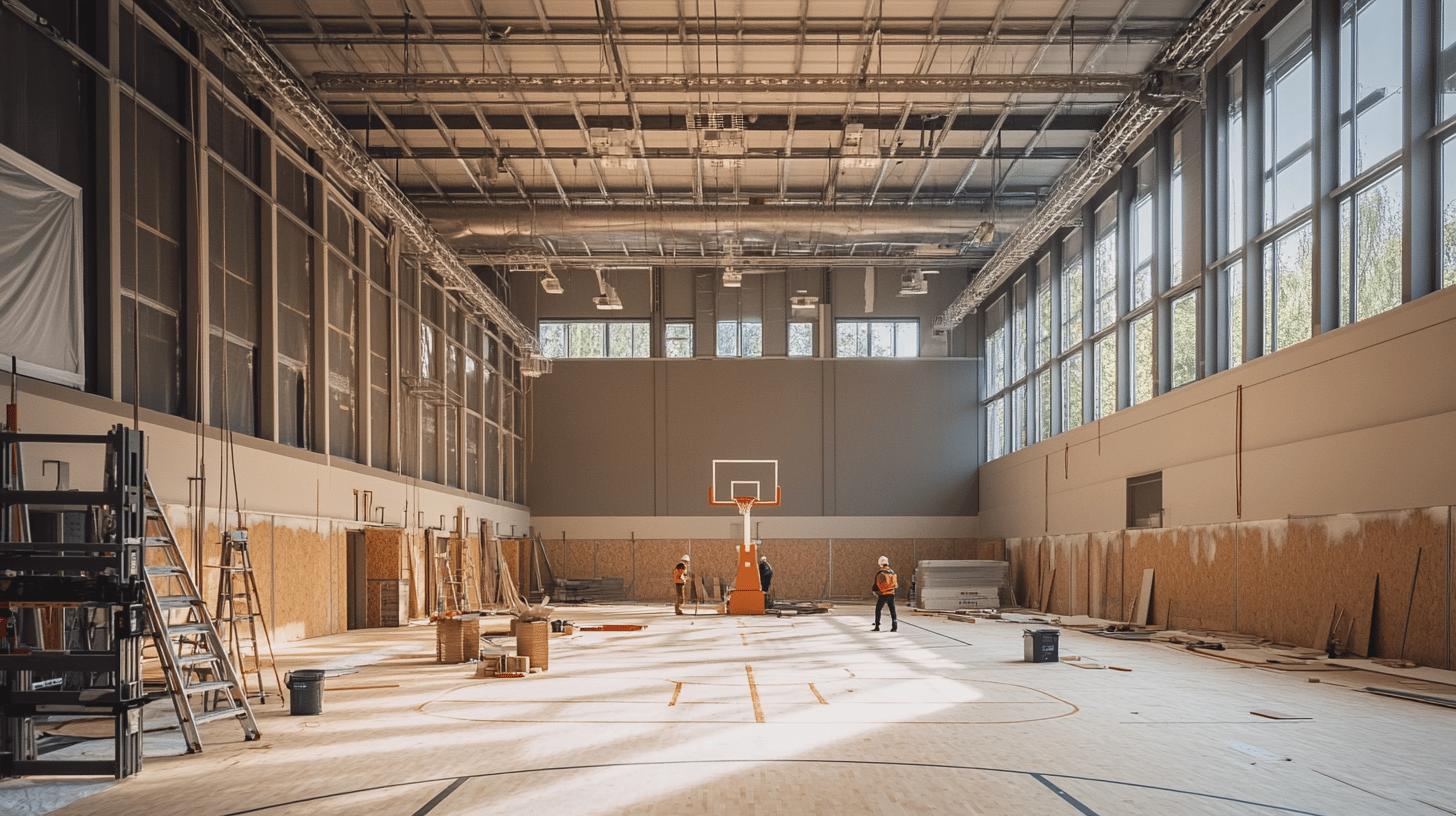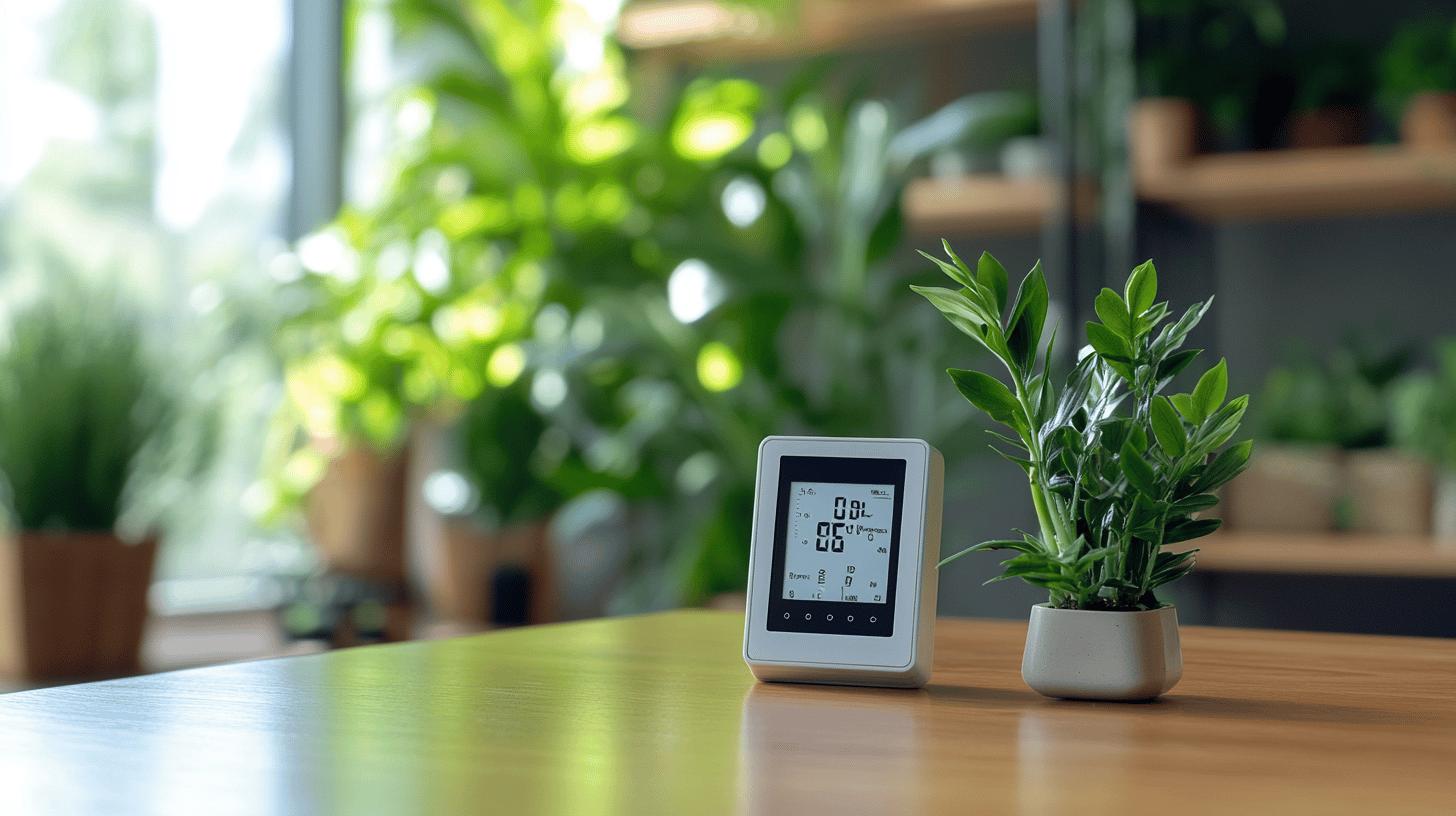Could the choice between micro-bevel and square edge boards influence a game’s outcome? This seemingly minor detail might be more critical than most facility managers anticipate. The grooves of micro-bevelled boards can subtly alter ball trajectory, creating deflections that might affect precision sports. In contrast, square edge boards provide an uninterrupted finish that encourages a consistent roll. Dive deeper into understanding how these two board types might just be the unsung hero or silent saboteur in achieving sporting precision.
Understanding Micro-Bevel and Square Edge Boards
Micro-bevel boards are characterised by a small 45-degree cut along the edges, creating a subtle groove between each board. This design provides a gentle transition from one plank to the next, making it a popular choice for those seeking a natural appearance with a touch of sophistication. Micro-bevelled edges are particularly beneficial in masking minor subfloor imperfections, which can be advantageous in sports halls where perfect levelness is challenging to achieve. They are typically used in settings where a more forgiving installation is desirable, and a slightly rustic aesthetic is appreciated.
Square edge boards, on the other hand, feature a uniformly smooth surface with planks that fit together seamlessly. Each edge is cut at a precise 90-degree angle, demanding meticulous manufacturing and installation to ensure a flawless finish. The seamless nature of square edge boards creates a modern, minimalist look, ideal for environments where a sleek and clean appearance is paramount. However, this design requires a perfectly level subfloor and careful installation to avoid visible unevenness, making it more suited to professional-grade sports arenas where precision is critical.
When comparing micro-bevel and square edge boards, one must consider both appearance and installation challenges. Micro-bevel boards offer a more relaxed and forgiving installation process, accommodating slight imperfections and providing a rustic charm. In contrast, square edge boards deliver a contemporary, seamless finish but at the cost of requiring precision during both manufacturing and installation. As such, the choice between these two designs often hinges on the desired aesthetic and the level of expertise available for installation.
Impact of Board Edges on Ball Trajectory
Micro-bevelled boards may cause slight deflections in ball trajectory due to their grooves. How do micro-bevel edges impact ball trajectory? The grooves created by the micro-bevels can introduce variations in the surface, affecting the roll and speed of a ball. These slight indentations can alter the ball’s path by introducing unexpected friction or changes in momentum, which can be critical in sports where precision is crucial. As the ball moves over these grooves, the subtle changes in surface height can lead to minor deviations from its intended path, potentially impacting the outcome of a game. The degree of this impact largely depends on the depth and angle of the bevel, as well as the speed and type of ball used in the sport.
In contrast, square edge boards provide a smooth transition between panels, supporting a more consistent ball trajectory. What trajectory benefits do square edge designs offer? The seamless surface created by square edge boards ensures minimal disruption in ball movement, maintaining a predictable path. This continuity is particularly beneficial in sports where accuracy and consistency are paramount, as it reduces the chances of unexpected deviations. By eliminating the grooves found in micro-bevel designs, square edge boards offer a stable playing surface that fosters uniform ball roll and speed. This consistency is especially valued in professional sports settings where even the slightest variation can affect performance outcomes.
Example Scenarios in Ball Sports
In sports like bowling and golf, where precision is paramount, board edges can significantly influence ball movement. For instance, in bowling, micro-bevel grooves may cause a ball to veer slightly off its intended line, affecting pin impact and scoring. Similarly, in golf, the roll and speed of the ball across a green can be affected by the board’s surface friction, with square edges supporting a more predictable putt. These examples underscore the importance of choosing the appropriate board design to ensure optimal ball trajectory and game performance.
Dirt Collection and Maintenance Considerations

Micro-bevelled edges, with their subtle grooves, have the potential to trap more dust compared to square edge boards. How does this impact maintenance? This design can lead to increased dust accumulation within the grooves, requiring more frequent cleaning to maintain optimal performance and appearance. Regular vacuuming is recommended to mitigate dust build-up, as it can be effectively removed with a gentle suction. Additionally, using a damp mop can help to further minimise dust and dirt, keeping the flooring clean and safe for sports activities. Unlike standard bevels, micro-bevelled edges tend to collect less dust, making maintenance less demanding overall.
In contrast, square edge boards offer a flat, seamless surface that reduces the likelihood of dirt accumulation. What are the cleanliness advantages of square edge designs? Their smooth design ensures that dust and debris are less likely to settle between the boards, making them easier to maintain. However, it is crucial to ensure a precise installation to avoid any unevenness that could trap dirt. Even with their cleanliness advantage, regular maintenance remains essential to preserve the flooring’s appearance and functionality.
- Regular vacuuming to prevent dust build-up.
- Use a damp mop for deeper cleaning.
- Ensure precise installation of square edge boards to avoid unevenness.
- Conduct periodic inspections to identify and address maintenance needs.
- Apply appropriate cleaning solutions to protect the flooring surface.
.
Sanding and Refinishing Board Edges
Sanding square edge boards can be a challenging and costly endeavour. Why is the sanding of square edge boards more demanding? The precision required in both manufacturing and installation means that any sanding imperfections can disrupt the seamless finish these boards are known for. To achieve a perfectly flat surface, post-installation sanding is often necessary, which demands technical skill and expertise. This process not only adds to the cost but also requires careful handling to maintain the uniform appearance. Moreover, the seamless design of square edge boards leaves little room for error, making the sanding process more intricate and time-consuming compared to other edge profiles.
In contrast, micro-bevelled boards offer a more forgiving approach when it comes to sanding. How do micro-bevel boards simplify the sanding process? The forgiving edge design allows for minor imperfections to be less noticeable, reducing the intensity and precision required during sanding. This simplifies the refinishing process and can lead to significant cost savings. The grooves in micro-bevelled boards can accommodate slight discrepancies in sanding, making them suitable for environments where a perfect level is challenging to achieve. As a result, they are often preferred in settings where ease of maintenance and cost-effectiveness are key considerations.
Aesthetic Outcomes
Sanding and refinishing have distinct impacts on the visual appeal of micro-bevel and square edge boards. Square edge boards, when expertly sanded, achieve a sleek, modern look with a flawless, uninterrupted surface. This enhances their minimalist aesthetic, making them ideal for contemporary settings. Micro-bevelled boards, on the other hand, retain a touch of rustic charm with their subtle grooves. The sanding process enhances the natural texture and character of the wood, providing a warm and inviting appearance that blends well with traditional and rustic interiors.
Expert Opinions and Studies on Edge Profiles
Expert opinions in sport science underscore the significant impact that precise edge designs can have on ball dynamics. How do edge profiles affect ball dynamics? Experts suggest that the interaction between the ball and flooring surface is critically influenced by the board’s edge design. Micro-bevelled edges, with their subtle grooves, have been noted to cause variations in ball movement. These grooves introduce an element of unpredictability by altering friction and changing the ball’s path. Conversely, square edge boards, with their seamless finish, provide a consistently smooth surface, which supports a more predictable and stable ball trajectory.
Studies focused on surface interaction reveal that edge profiles play a crucial role in friction and bounce. What do studies say about edge-induced friction and bounce? Research indicates that micro-bevelled edges contribute to increased friction due to the tiny grooves along the board edges. This friction can result in unexpected ball deflections, affecting both speed and direction. On the other hand, square edge boards minimize friction variations, promoting a steady bounce and consistent roll. The lack of grooves in square edge designs ensures an uninterrupted surface, facilitating uniform ball behaviour across the playing area.
Practical examples further illustrate the impact of board edge design on sports performance. How do board edges affect ball dynamics in real-world scenarios? In sports such as indoor basketball and volleyball, where precision and consistency are paramount, square edge boards are preferred for their ability to maintain a reliable ball trajectory. In contrast, micro-bevelled designs, often found in multi-use sports halls, introduce slight variations that can challenge athletes’ precision, especially in fast-paced games. These differences highlight the importance of selecting the appropriate board design based on the specific demands of the sport.
- Micro-bevelled edges increase friction and potential for ball deflections.
- Square edges provide consistent ball roll and bounce.
- Edge profiles are critical in sports requiring precision.
- Surface interaction studies highlight the role of board design in sports performance.
.
Final Words
Exploring the nuances of micro-bevel and square edge boards reveals significant insights into their effects on ball trajectory, maintenance, and finishing processes.
Micro-bevelled boards offer distinct characteristics, with subtle grooves potentially affecting ball roll but requiring simpler maintenance.
Conversely, square edge boards provide a seamless finish that enhances ball consistency yet demands meticulous installation and upkeep.
Understanding these differences is vital for optimising sports surfaces.
Professionals seeking to refine ball dynamics or improve flooring aesthetics must consider these edge profiles as key influencers in achieving superior performance and longevity.
Choose board profile → Wooden Sports Flooring
FAQ
What is the difference between micro-bevelled and square edge boards?
Micro-bevelled floorboards have a slight 45-degree edge cut, forming grooves between boards.
Square edge boards feature perfectly aligned edges, achieving a seamless surface, demanding meticulous installation.
Is micro-bevel or square edge flooring better for ball trajectory?
Square edge flooring supports consistent ball trajectory by offering smooth transitions between panels.
Micro-bevelled flooring can produce slight trajectory deflections due to grooves, impacting roll and speed.
What is the difference between a micro-bevel and an authentic bevel?
Micro-bevels are subtle, with a slight 45-degree cut. Authentic bevels are more pronounced, creating deeper grooves.
Micro-bevels offer less dust accumulation and easier maintenance.
What are the advantages of square edge hardwood flooring in terms of maintenance?
Square edge flooring reduces dirt collection with its flat surface, although it demands precise installation.
Regular cleaning requires less intensive vacuuming compared to micro-bevel boards.
Are micro-bevel vinyl planks easier to maintain?
Yes, micro-bevel vinyl planks are designed to trap less dust than standard bevels.
Regular vacuuming and dirt management are supported by this forgiving edge design.
How does edge design affect sanding and refinishing?
Square edge flooring can be costlier to sand due to precision needed post-installation.
Micro-bevelled flooring demands less sanding, providing a forgiving design for refinishing.
What are the aesthetic outcomes of refinishing micro-bevel and square edge boards?
Sanding enhances visual appeal by smoothing imperfections.
Micro-bevels offer a distinct groove, while refinished square edges maintain a seamless look.
What do experts say about the impact of edge profiles on sports performance?
Experts suggest edge profiles significantly impact ball dynamics. Studies highlight influence on friction and bounce.
Research reveals micro-bevelled designs can modify ball roll, while square edges offer stability.


